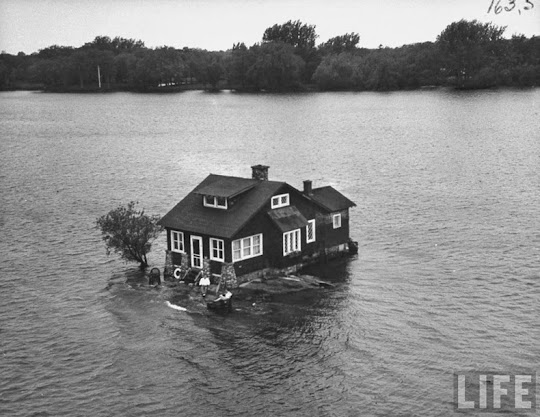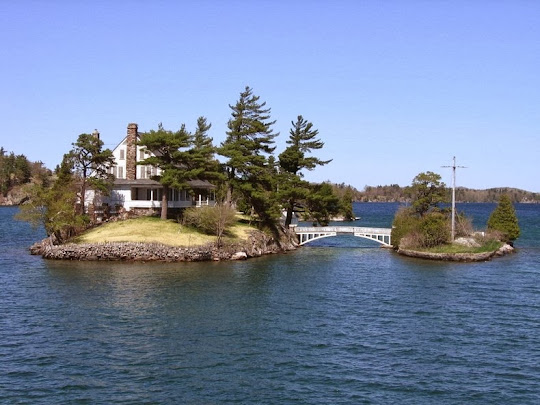
The Just Room Enough Island.
The largest of these islands is Wolfe Island which is about 29 km long and 9 km at its widest point. It has a resident population approximately 1400 people. By comparison, the very aptly named “Just Room Enough“ is the tiniest island that squeezes a single house and a couple of wrought-iron benches pushed hard up against the shingles onto its banks.
A large number of these islands are inhabited, often bearing a single and at times a tiny house, and are serviced by ferry boats from the mainland. Today most of the islands boast of having hydro electric power and telephone service being carried by underwater cable from island to island.
Around twenty of these islands form the Thousand Islands National Park, the oldest of Canada's national parks east of the Rockies. The park hosts campgrounds, inland walking trails, annual family events, as well as a national heritage building. The Thousand Islands-Frontenac Arch region was designated a World Biosphere Reserve by UNESCO in 2002.

Another view of Just Room Enough Island.

An undated picture of Just Room Enough Island. Photo credit: Life.com

Aerial view showing some of the many islands of the Thousand Islands.

Boldt Castle, located on Heart Island in the Thousand Islands.








Source
